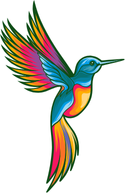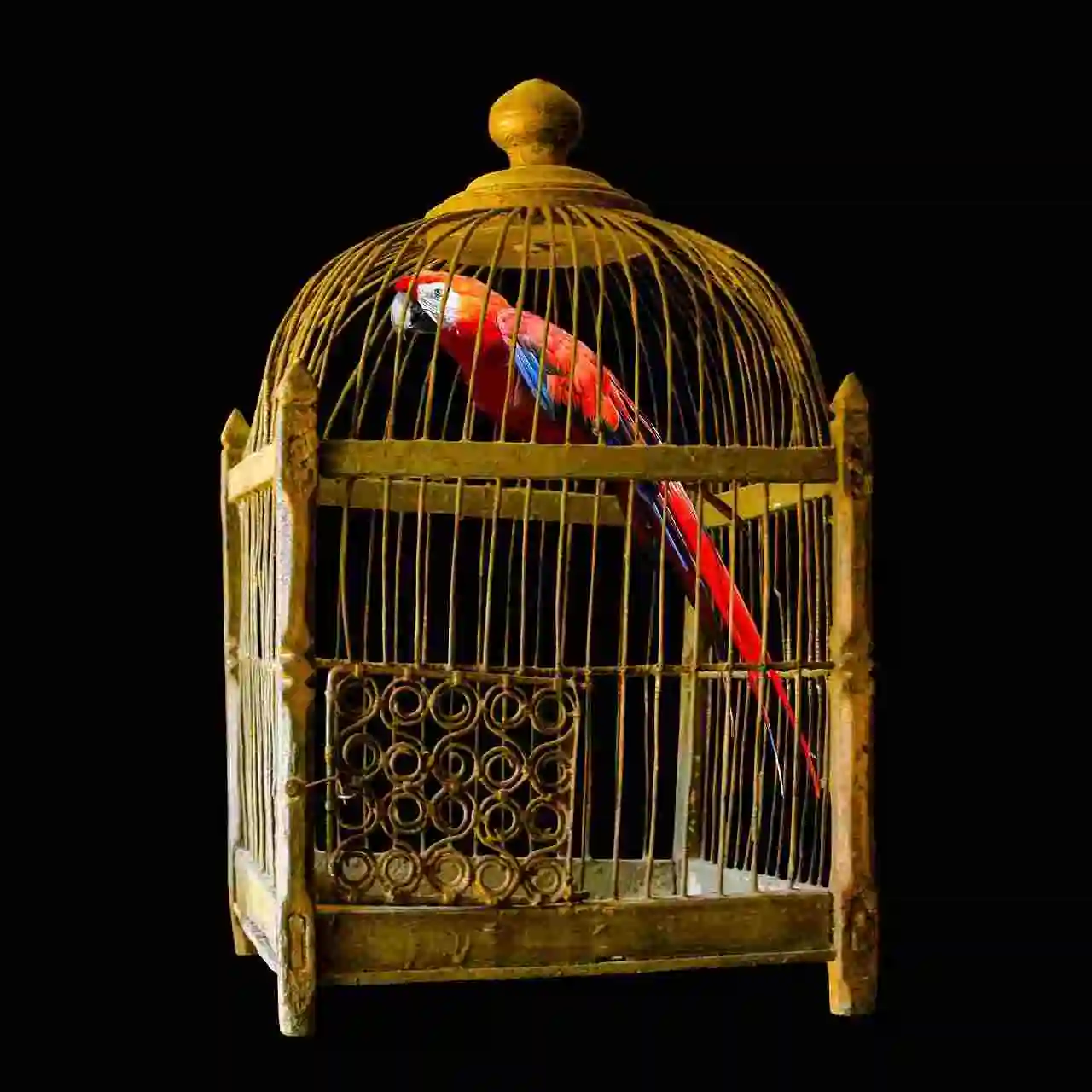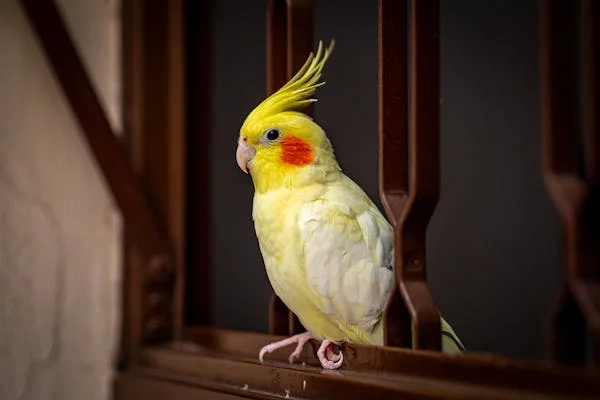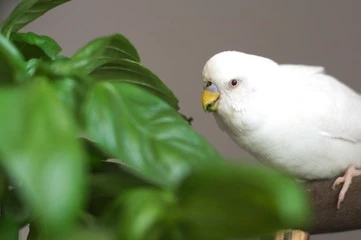Proven Bird Training: Best Path to Happy, Magical Pets
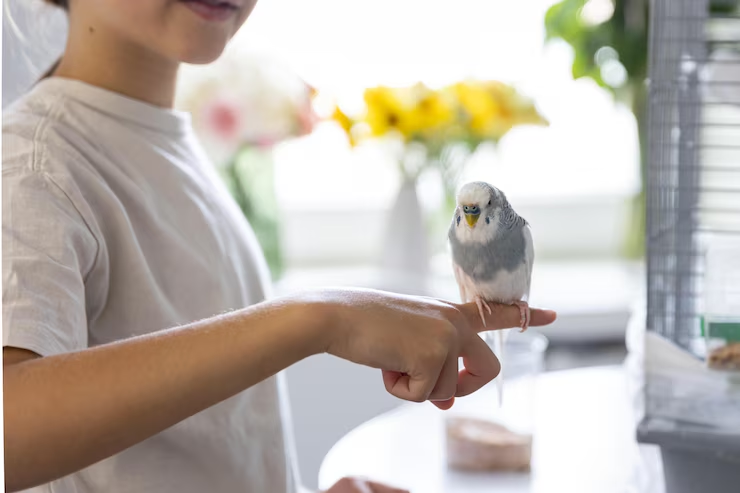
Table of Contents
Have you ever watched in awe as someone’s pet bird performed an impressive trick or responded to their owner’s voice? Many bird owners don’t realize that their feathered companions are highly intelligent creatures capable of learning a wide variety of behaviors and commands. In fact, some parrot species have the cognitive abilities of a 3-5 year old child! Learning how to train a bird not only provides mental stimulation for your pet but also strengthens your bond and helps prevent problematic behaviors that often develop from boredom or lack of interaction.
Whether you’ve just welcomed a new feathered friend into your home or have had your bird companion for years, implementing proper bird training techniques can transform your relationship and enhance your bird’s quality of life. This comprehensive guide will walk you through everything you need to know about bird training for beginners and provide expert bird training tips that work across many species.
Understanding Bird Behavior and the Importance of Training

When I first brought home my cockatiel, Charlie, I had no idea how much his behavior would improve with consistent training. Before we started working together, he was nervous, prone to nipping, and would screech whenever I left the room. Six months later, he steps up on command, plays interactive games, and even performs simple tricks that amaze my friends and family.
Training your bird isn’t just about teaching cool tricks—it’s about creating a language between you and your pet that strengthens your relationship. Birds are highly social creatures that naturally form strong bonds with their flock members. In captivity, you become their flock, and training helps establish clear communication and trust.
Many bird owners mistakenly believe that birds are too independent or not intelligent enough to be trained. The truth is quite the opposite—birds are among the most trainable pets due to their remarkable intelligence and social nature. Even small species like budgies can learn dozens of commands and behaviors with the right approach.
Training also provides crucial mental stimulation. In the wild, birds spend hours searching for food, avoiding predators, and interacting with their flock. Captive birds need similar mental challenges to prevent boredom, which can lead to destructive behaviors like feather plucking, excessive screaming, or aggression.
Essential Pre-Training Steps: Building a Foundation for Success
Bonding and Trust: How to Build a Positive Relationship with Your Bird
Before you begin formal bird training, you need to establish a foundation of trust. Birds won’t learn from someone they fear or don’t trust. Here’s how to build that essential bond:
- Spend quality time daily: Sit near your bird’s cage and speak softly. Read a book aloud or play gentle music to help your bird become comfortable with your presence.
- Observe body language: Learn to recognize signs of comfort (relaxed feathers, gentle chirping) versus stress (flattened feathers, rapid breathing, dilated pupils).
- Create a safe environment: Ensure your bird’s living space is comfortable, enriching, and free from potential dangers like toxic plants or fumes.
- Hand feeding: If your bird is comfortable enough, offer favorite treats from your hand to create positive associations.
Understanding Your Bird’s Personality
Just like people, birds have unique personalities and learning styles. Some birds are naturally bold and curious, while others are more cautious and need extra time to warm up to new experiences. Pay attention to what motivates your particular bird—is it food rewards, verbal praise, or perhaps the opportunity to play with a favorite toy?
My African Grey, Luna, responds best to verbal praise and head scratches, while my budgie pair are primarily motivated by millet treats. Recognizing these preferences will make your training sessions much more effective.
Setting Realistic Expectations
Training success depends greatly on managing your expectations. Some birds learn new commands in just a few sessions, while others might take weeks to master the same skill. Factors affecting learning speed include:
- Species (larger parrots often learn complex behaviors more quickly)
- Age (younger birds typically learn faster)
- Previous experiences (birds with positive human interactions learn more readily)
- Individual temperament
Celebrate small victories along the way—even slight progress represents a step forward in your training journey.
Choosing the Right Training Environment
The environment where you conduct training sessions can significantly impact your success:
- Select a quiet room with minimal distractions
- Ensure the temperature is comfortable (70-75°F is ideal for most birds)
- Choose a time when your bird is naturally alert but not hungry or tired
- Keep sessions short initially (5-10 minutes)
- Establish a consistent routine for training times
Positive Reinforcement: The Key to Effective Bird Training
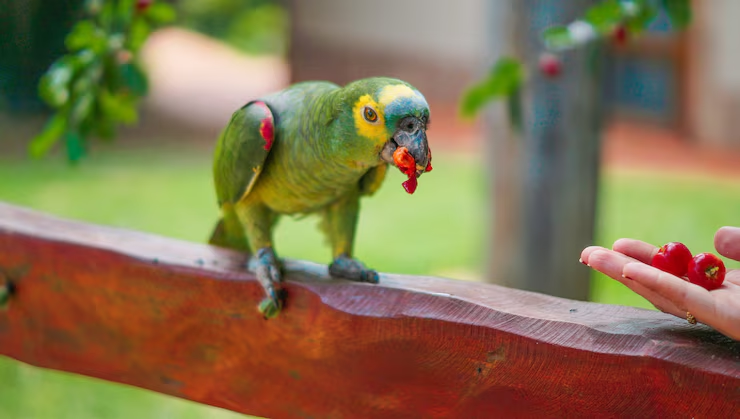
Positive reinforcement is the cornerstone of all effective bird training strategies. This approach involves rewarding behaviors you want to encourage, which makes the bird more likely to repeat those behaviors in the future.
The Science Behind Positive Reinforcement
When your bird performs a desired behavior and immediately receives something pleasurable (like a favorite treat), their brain creates a positive association with that behavior. This is based on a psychological principle called operant conditioning—the same science used by professional animal trainers worldwide.
Identifying Your Bird’s Favorite Rewards
Different birds are motivated by different rewards:
| Reward Type | Examples | Best For |
|---|---|---|
| Food Treats | Millet, nuts, small pieces of fruit, nutriberries | Most birds, especially food-motivated species |
| Verbal Praise | “Good bird!” in an enthusiastic tone | Birds bonded to their owners |
| Physical Rewards | Head scratches, gentle petting (for birds that enjoy it) | Well-socialized larger parrots |
| Play | Access to a favorite toy | Active, playful species |
The most effective reward is something your bird truly desires but doesn’t receive all the time. Experiment to find what motivates your specific bird.
Using a Clicker for Precision Training
A clicker is a small device that makes a distinct clicking sound when pressed. While optional, clickers can enhance your training by marking the exact moment your bird performs the desired behavior:
- Begin by “charging” the clicker—click and immediately offer a treat several times
- Once your bird associates the click with receiving a reward, use it to mark correct behaviors
- Always follow the click with a reward, even if there’s a slight delay in delivering it
Basic Bird Training Commands: Step-by-Step Guides
Step-Up/Step-Down Command
The “step-up” command is often the first and most important command to teach your bird. It allows you to safely handle your bird and is the foundation for many other training exercises.
How to teach Step-Up:
- Position your finger (or a perch for larger birds) at your bird’s chest level
- Gently press against their lower chest while saying “step up” in a clear, positive voice
- When they step onto your finger, immediately reward with praise and/or a treat
- Practice frequently but respect your bird’s comfort level
- Once mastered, teach “step down” by reversing the process
Target Training
Target training involves teaching your bird to touch a specific object (usually a small stick or dowel) with their beak. This powerful technique can be used to guide your bird’s movements and teach more complex behaviors.
How to introduce Target Training:
- Present the target stick near your bird (but not so close that it’s frightening)
- Wait for your bird to show curiosity—even looking at the stick is a good start
- When your bird moves toward or touches the stick, immediately click (or say “good!”) and reward
- Gradually increase the distance the bird must move to touch the target
- Add the verbal cue “target” just before presenting the stick
Recall Training
Teaching your bird to come when called provides both practical benefits and enhanced safety.
Steps for Recall Training:
- Begin at a very short distance in a secure room
- Show your bird a favorite treat and say their name followed by “come”
- When they move toward you, reward immediately
- Gradually increase distance as your bird becomes reliable
- Practice in different locations and scenarios
Station Training
Station training teaches your bird to go to a specific perch or location on command—incredibly useful for managing behavior during meals or when guests visit.
Teaching Station:
- Choose a consistent perch or location as your bird’s “station”
- Use target training to guide your bird to the station
- Say “station” as they reach the perch
- Reward generously when they stay on the station
- Gradually increase the duration they must stay before receiving the reward
“No” or “Leave It” Command
Teaching your bird to stop an unwanted behavior is essential for safety and household harmony.
Training the “No” Command:
- When your bird begins an unwanted behavior, say “no” in a firm but non-threatening voice
- Immediately redirect them to an acceptable alternative behavior
- Reward heavily when they engage in the alternative behavior
- Be consistent—never allow the unwanted behavior sometimes and forbid it other times
Advanced Bird Training: Taking Your Training to the Next Level
Once your bird has mastered basic commands, you can move on to more complex behaviors and tricks. This advanced bird training not only provides impressive demonstrations of your bird’s intelligence but also offers excellent mental stimulation.
Teaching Tricks
Popular tricks to teach your bird include:
- Wave: Build on the step-up command, but move your finger away so the bird lifts their foot without stepping up
- Turn around: Use target training to guide your bird in a complete circle
- Play dead: Teach your bird to lie on their back briefly (best for hand-raised, trusting birds)
- Fetch: Train your bird to retrieve small objects and bring them back to you
- Basketball: Show your bird how to drop small balls into a container
Puzzle Toys and Enrichment
Puzzle toys that dispense treats when manipulated properly provide excellent mental challenges. You can train your bird to solve increasingly difficult puzzles, which simulates the problem-solving they would naturally do in the wild.
Create a rotation of different enrichment activities to keep your bird engaged:
- Foraging toys that require working to access food
- Puzzle boxes with hidden compartments
- Toys that must be disassembled to reach treats
- Training that incorporates toys and tools
Shaping Behavior
Shaping is an advanced technique where you reward successive approximations of a desired behavior. Rather than waiting for your bird to perform the complete behavior (which might never happen naturally), you:
- Reward any movement in the right direction
- Gradually raise criteria for receiving rewards
- Build the complete behavior in small increments
For example, to teach your bird to ring a bell, you might first reward them for looking at the bell, then for moving toward it, then for touching it, and finally for pushing it hard enough to make it ring.
Addressing Common Bird Training Challenges and Problems
Even with perfect technique, you’ll likely encounter some challenges during your bird training journey. Here’s how to address common issues:
Biting
Biting often stems from fear, territorial behavior, or previous negative experiences. To address it:
- Identify triggers that precede biting incidents
- Use target training to create positive associations with hands
- Never punish biting—this confirms the bird’s fear
- Consider using a perch or stick for training until biting subsides
- Respect body language that indicates discomfort
Screaming
While some vocalization is normal, excessive screaming can be problematic. Address it by:
- Never rewarding screaming with attention (even negative attention)
- Rewarding quiet behavior extensively
- Providing regular interaction and enrichment
- Teaching an alternative behavior like a quieter vocalization
- Maintaining consistent daily routines
Feather Plucking
This serious behavior often has multiple causes including medical issues, stress, boredom, or nutritional deficiencies:
- Consult an avian veterinarian to rule out medical causes
- Increase environmental enrichment
- Implement a consistent training routine
- Consider protective collars only under veterinary guidance
- Provide a varied, nutritious diet
Fear and Anxiety
Birds with fear issues require special training approaches:
- Use systematic desensitization—gradually introducing the feared stimulus at a distance
- Pair scary experiences with positive reinforcement
- Never force interaction
- Create safe spaces where your bird can retreat when overwhelmed
- Progress at your bird’s pace, not yours
Regression in Training
Sometimes birds seem to forget their training or refuse to perform known behaviors:
- Return to basics and rebuild the behavior
- Check for health issues that might affect motivation
- Evaluate whether your rewards are still effective
- Consider environmental changes that might be causing stress
- Be patient and consistent
Species-Specific Considerations
Different bird species have unique traits that affect training approaches:
Parrots (Macaws, Cockatoos, Amazons, African Greys)
- Highly intelligent with excellent problem-solving abilities
- Can learn complex behaviors and extensive vocabularies
- Often motivated by both food and social rewards
- May test boundaries and require consistent leadership
- Need extensive mental stimulation to prevent boredom
Cockatiels
- Generally gentle and eager to please
- Respond well to vocal praise and social interaction
- Learn simple tricks readily but may struggle with complex sequences
- Often food-motivated but in smaller quantities
- Benefit from daily training sessions of 10-15 minutes
Budgies (Parakeets)
- Highly trainable despite their small size
- Quick learners with impressive memory
- Primarily motivated by millet and other seed treats
- Need very short training sessions (3-5 minutes)
- Can learn vocabulary and simple tricks
Finches and Canaries
- Less commonly trained but can learn basic behaviors
- Need very small, high-value treats
- Best trained using target sticks rather than hands
- Benefit from flock training (training multiple birds together)
- Respond to changes in light and sound as rewards
Ethical Considerations in Bird Training
Responsible bird training prioritizes the bird’s welfare above performance:
- Never use punishment or negative reinforcement techniques
- Respect body language indicating stress or discomfort
- Provide choice whenever possible during training sessions
- Consider natural behaviors when selecting tricks to teach
- Balance training with free time and natural socialization
Remember that birds are not performing machines but sentient beings with their own desires and needs. The best training enhances their natural abilities and provides mental stimulation while respecting their autonomy.
When to Seek Professional Help
Some situations warrant professional intervention:
- Aggressive behaviors that don’t improve with basic training
- Self-destructive behaviors like severe feather plucking
- Extreme fear or phobic responses
- Stereotypic behaviors (repetitive movements with no purpose)
- Significant regression in previously learned behaviors
Resources for finding qualified help include:
- Certified Parrot Behavior Consultants
- Avian veterinarians with behavior expertise
- Local bird clubs with experienced mentors
- Online courses from reputable bird training experts
Conclusion: The Rewards of Training and Building a Strong Bond
Consistent bird training transforms both your pet’s life and your relationship. My own journey with bird training has given me incredibly rewarding connections with my feathered companions. They’re not just pets—they’re intelligent partners with whom I share a sophisticated communication system.
The birds benefit enormously too. Trained birds typically show reduced stress behaviors, increased confidence, and greater adaptability to changes in their environment. The mental stimulation from regular training sessions helps prevent many common behavior problems and contributes to your bird’s overall psychological well-being.
Remember that bird training is never truly “finished.” Continue learning, adding new challenges, and refining your techniques. The journey of discovery with your bird will bring rewards for years to come.
Have you started training your bird? What commands or tricks has your feathered friend mastered? Share your bird training tips and experiences in the comments below!
